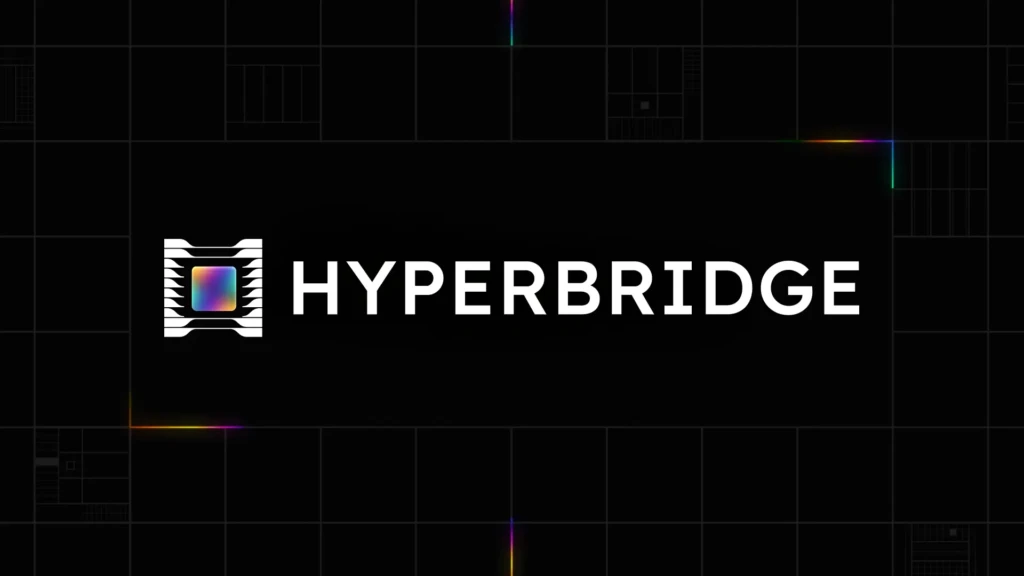What Is a Hyper Bridge?
A hyper bridge is an advanced blockchain interoperability protocol designed to facilitate secure, trustless, and scalable communication between different blockchain networks. Unlike traditional bridges that often rely on centralized intermediaries, a hyper bridge operates on a decentralized framework, allowing for seamless asset transfers and data exchanges across diverse blockchain ecosystems.
This innovative approach addresses the limitations of siloed blockchain systems, enabling developers to create applications that can interact with multiple blockchains simultaneously. By leveraging cryptographic proofs and decentralized relayers, hyper bridges ensure the integrity and security of cross-chain transactions without the need for staking or whitelisting.
The Need for Hyper Bridges in Blockchain Ecosystems
Overcoming Blockchain Fragmentation
The proliferation of blockchain networks has led to a fragmented ecosystem where each chain operates independently, often hindering the flow of assets and data between them. This fragmentation poses challenges for developers and users seeking to leverage the unique features of different blockchains.
Hyper bridges address this issue by providing a unified protocol that connects disparate blockchains, enabling cross-chain communication and interoperability. This interconnectedness fosters innovation and expands the possibilities for decentralized applications (dApps).
Enhancing Security and Trustlessness
Traditional cross-chain bridges have been susceptible to security breaches, often due to reliance on centralized validators or custodians. Hyper bridges mitigate these risks by utilizing decentralized relayers and cryptographic proofs to validate transactions, ensuring that no single entity has control over the process. This decentralized approach enhances the trustlessness and security of cross-chain interactions.
How Hyper Bridges Function
Decentralized Relayers
At the core of a hyper bridge is its decentralized network of relayers. These relayers are responsible for transmitting messages between blockchains, ensuring that transactions are executed accurately and securely. Unlike traditional bridges that may require staking or whitelisting, hyper bridges allow anyone to participate as a relayer, democratizing the process and increasing the network’s resilience.
Interoperability Coprocessor Model
Hyper bridges often employ an interoperability coprocessor model, which acts as an intermediary layer between blockchains. This model facilitates secure and efficient communication by verifying consensus mechanisms, state transitions, and cryptographic proofs across different networks.
Cryptographic Proofs and State Validation
To ensure the integrity of cross-chain transactions, hyper bridges utilize cryptographic proofs and state validation techniques. These mechanisms verify that the state of one blockchain corresponds accurately to the state of another, preventing issues such as double-spending and ensuring the consistency of data across chains.
Applications of Hyper Bridges
Decentralized Finance (DeFi)
In the DeFi space, hyper bridges enable the seamless transfer of assets between different blockchain networks, allowing users to access a broader range of financial services and products. This interoperability enhances liquidity and expands the opportunities for yield farming, lending, and borrowing across multiple platforms.
Cross-Chain dApp Development
Developers can leverage hyper bridges to build decentralized applications that operate across multiple blockchains, taking advantage of the unique features and capabilities of each network. This cross-chain functionality fosters innovation and enables the creation of more robust and versatile dApps.
Token Portability
Hyper bridges facilitate the transfer of tokens between different blockchain networks, enhancing token liquidity and accessibility. This portability allows users to move their assets freely, optimizing their portfolios and participating in various ecosystems.
Advantages of Hyper Bridges
- Decentralization: Eliminates the need for centralized intermediaries, reducing single points of failure.
- Security: Utilizes cryptographic proofs and decentralized relayers to ensure transaction integrity.
- Scalability: Supports the growth of blockchain ecosystems by enabling cross-chain interactions.
- Flexibility: Allows for the development of cross-chain applications and services.
- Cost Efficiency: Reduces transaction fees by eliminating intermediaries and optimizing processes.
Challenges and Considerations
Network Congestion
As the adoption of hyper bridges increases, the underlying networks may experience congestion, leading to delays and increased transaction costs. Scalability solutions and optimizations are necessary to address these challenges and maintain efficient operations.
Security Risks
While hyper bridges enhance security through decentralization, they are not immune to attacks. Continuous auditing, monitoring, and the implementation of robust security protocols are essential to safeguard against potential vulnerabilities.
Regulatory Uncertainty
The evolving regulatory landscape for blockchain technologies may impact the development and operation of hyper bridges. Stakeholders must stay informed about regulatory developments and ensure compliance with applicable laws and regulations.
Future Outlook
The development of hyper bridges marks a significant advancement in blockchain interoperability, paving the way for more interconnected and efficient decentralized ecosystems. As technology evolves, we can anticipate improvements in scalability, security, and user experience, further enhancing the potential of hyper bridges in facilitating seamless cross-chain interactions.
FAQ: Understanding Hyper Bridges
1. What is a hyper bridge in blockchain technology?
A hyper bridge is an advanced interoperability protocol that enables secure, trustless, and scalable communication between different blockchain networks, facilitating seamless asset transfers and data exchanges.
2. How does a hyper bridge differ from traditional blockchain bridges?
Unlike traditional bridges that often rely on centralized intermediaries, hyper bridges operate on a decentralized framework, utilizing cryptographic proofs and decentralized relayers to ensure transaction integrity and security.
3. What are the benefits of using a hyper bridge?
Hyper bridges offer enhanced security, decentralization, scalability, and flexibility, allowing for the development of cross-chain applications and services while reducing transaction costs.
4. Are there any risks associated with hyper bridges?
While hyper bridges enhance security through decentralization, they are not immune to attacks. Continuous auditing, monitoring, and the implementation of robust security protocols are essential to safeguard against potential vulnerabilities.
5. What does the future hold for hyper bridges?
The future of hyper bridges looks promising, with ongoing advancements in technology aimed at improving scalability, security, and user experience, further enhancing the potential for seamless cross-chain interactions.

